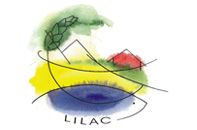Living Landscapes China (LILAC)

China’s rapid industrial growth in recent years has also increased the demand for natural rubber. As a consequence, rubber plant monocultures have displaced much natural vegetation. The Yunnan and Mekong regions in particular are witnessing an unbridled boom in rubber production. The consequences of social changes, economic risk for the farmers and inadvertent losses of biological diversity and natural ecosystems have been given no consideration so far. Effective land use planning is crucial when taking into account the complexity of the economic, social and ecological processes which are inherent to the landscape. For this reason researchers from Germany and China initiated the Living Landscapes China (LILAC) project to bring both the cultivation of cash crops, particularly rubber and environmental protection into harmony with each other.
LILAC is focusing on rural development through land use diversification in the south-western Chinese highlands. In Germany partners include the universities of Giessen, Hannover, Hohenheim, HU Berlin, Kassel and Passau. The Federal Ministry for Education and Research funds the German researchers while the Ministry for Science and Technology in Beijing is funding the Chinese partners. The collaborative project aims at developing a land use plan, through the use of certain strategic tools. Economists, ecologists and sociologists from Germany and China are working together to develop an integrated model based on a Geographic Information System (GIS), which will be able to predict the economic, social or ecological effects of different land uses within a landscape context. Land use scenarios will be developed and analysed with local decision makers. Emphasis will also be placed on investigating alternative, high-value indigenous products, such as medicinal plants and spices, to promote the rural economy and agro-biodiversity.
